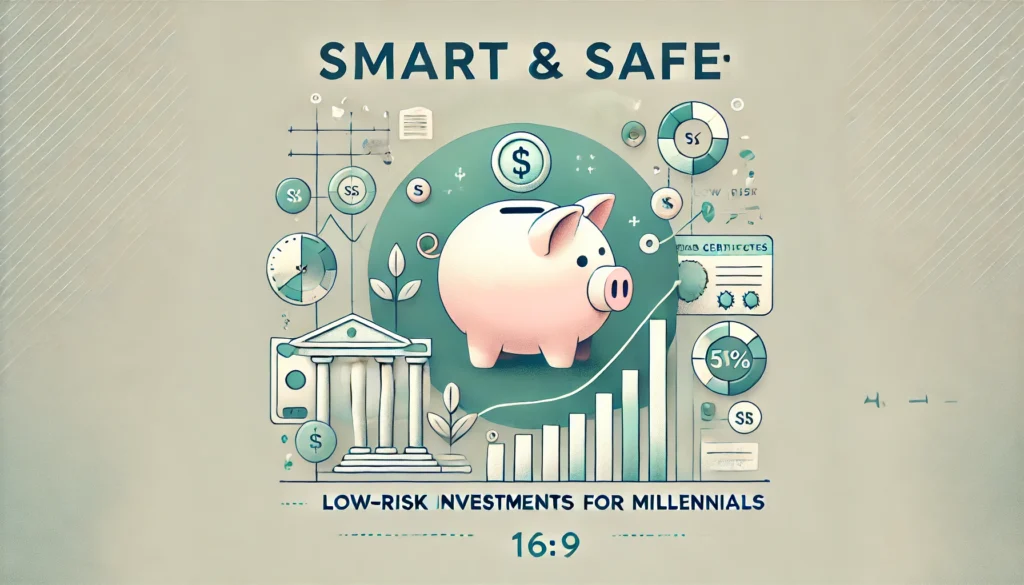If you’ve ever wondered how much money you need to retire comfortably, you’re not alone. All around the world, people aspire to enjoy a financially secure retirement. However, the concept of retirement planning can seem daunting, especially if you’re unsure where to start or how much you need to save. The good news is that by understanding key personal finance principles, getting on top of your budgeting for retirement, and learning how to invest for the future, you can position yourself to achieve financial independence sooner than you might think.
In this article, we’ll explore how to save for retirement effectively and outline practical steps you can take today to stay on track for 2025—and beyond. Whether you’re aiming to travel during your golden years, support your loved ones, or simply reduce financial stress, the strategies below will help you gain clarity and confidence.
Why Retirement Planning Matters More Than Ever
1. Rising Cost of Living
One of the main reasons retirement planning has become more urgent is the rising cost of living. From groceries to healthcare, expenses tend to increase over time. According to various financial reports, inflation can average anywhere between 2% to 3% annually. Over several decades, that can significantly reduce the purchasing power of your money. Consequently, if you don’t plan well, the nest egg you’re building might not stretch as far as you initially expected.
2. Longer Life Expectancy
Advances in healthcare mean people are generally living longer, which can be great news—except when it comes to funding those extra years. Longer lifespans require more extensive retirement savings to cover daily living costs, health expenses, and unforeseen medical bills. If your retirement strategy does not account for the possibility of living into your 80s or 90s, there’s a risk of outliving your money.
3. Changing Employment Landscape
The modern workforce is evolving. With the rise of freelance work, remote jobs, and gig-economy platforms, not everyone has access to employer-sponsored pension plans or consistent retirement contributions. This shift makes budgeting for retirement even more critical, as freelancers and gig workers often need to take extra responsibility for their own retirement savings.
4. Peace of Mind and Quality of Life
At its core, retirement planning isn’t just about money—it’s about peace of mind and the freedom to choose the lifestyle you desire. When you have a solid financial plan, you’re better equipped to handle life’s curveballs. You can focus on what truly matters, like spending time with family, pursuing hobbies, or even starting a passion project in your later years.
Setting Your Retirement Goals for 2025
1. Determine Your Desired Lifestyle
Before crunching any numbers, it’s essential to visualize what you want your retirement to look like. Do you plan to downsize your home, travel the world, or spend your days volunteering? Having a clear picture of your ideal retirement can guide your retirement planning decisions and help determine how much you’ll need in retirement savings.
2. Calculate Your Annual Cost of Living
Once you’ve established a vision, the next step is estimating your annual expenses in retirement. Consider costs like:
- Housing (rent, mortgage, or property taxes)
- Daily living expenses (food, utilities, transportation)
- Healthcare and insurance
- Leisure and entertainment
- Travel and vacations
- Emergency or miscellaneous costs
By adding these together, you can arrive at an approximate annual figure. For instance, if you expect to need around $40,000 per year to live comfortably in 2025, that will form the basis of your budgeting for retirement strategy.
3. Factor in Inflation
Remember that the $40,000 you need today may not have the same purchasing power in a few years. With inflation, your target annual expenses could increase. For example, if inflation averages 3% annually, you can expect your required funds to rise accordingly each year. Use an online inflation calculator to adjust your estimates and maintain realistic expectations.
4. Identify Other Retirement Income Streams
Beyond personal savings, consider other potential income sources such as pensions, Social Security benefits, rental income, or part-time work. The more diverse your retirement income streams, the less you’ll have to rely on personal savings or investment returns alone.
How Much Money Do You Need to Retire by 2025?
The 4% Rule as a Starting Point
A popular guideline suggests using the “4% rule” to estimate retirement needs. If you withdraw about 4% of your total retirement savings in the first year of retirement—and adjust for inflation each subsequent year—you have a decent chance of not depleting your nest egg over 30 years. For instance, if you need $40,000 annually:$40,000/0.04=$1,000,000\$40,000 / 0.04 = \$1,000,000$40,000/0.04=$1,000,000
This implies you’d need approximately $1 million saved to support $40,000 in yearly expenses under the 4% rule. However, this is just a rule of thumb; your actual requirement may vary based on factors like market performance, healthcare costs, and lifestyle changes.
Accounting for Individual Factors
- Health Status: If you anticipate higher medical expenses due to chronic health conditions, you may need more than the 4% rule suggests.
- Geographical Location: Living in a high-cost-of-living city can inflate your annual expenses. Conversely, relocating to a more affordable area can reduce them.
- Family Responsibilities: If you plan to support family members financially or expect to have them live with you, your retirement budget will need to accommodate those costs.
Adjusting for 2025
With 2025 fast approaching, you may need to accelerate your savings. A shorter time frame could require more aggressive strategies, including higher contributions or a diversified investment approach to achieve financial independence on a tighter schedule.
Key Strategies to Boost Your Retirement Savings
1. Start (or Revamp) Your Budget
Budgeting for retirement begins with analyzing your current income and expenses. Track all your spending, from utilities to daily coffee runs. Once you have a clear snapshot, identify areas where you can cut costs. For instance, you might choose to cook at home more often or reduce subscription services. Every dollar you save can go directly into your retirement savings.
2. Automate Your Savings
One powerful habit is automating your contributions. By setting up automatic transfers to your retirement account—whether it’s an employer-sponsored plan, an individual retirement arrangement (IRA), or another investment vehicle—you remove the temptation to spend money elsewhere. Aim to increase your automated contributions each year, especially if you get a raise or bonus.
3. Take Advantage of Tax-Advantaged Accounts
Tax-advantaged accounts, such as 401(k) plans in the United States or similar retirement plans in other countries, offer an excellent way to boost long-term savings. Employer-sponsored plans often come with matching contributions, which effectively double a portion of your savings. If you’re not taking full advantage of that match, you’re leaving free money on the table.
Additionally, an IRA can supplement your employer-sponsored plan. Depending on your income level and local regulations, you may qualify for a tax deduction or tax-free growth. Be sure to consult a financial advisor or use reliable online resources to find what best suits your situation.
4. Explore Low-Cost Investment Options
The stock market can be intimidating, but it’s crucial to invest in assets that have the potential to outpace inflation. Index funds and exchange-traded funds (ETFs) are cost-effective options that provide broad market exposure. By diversifying across different asset classes—stocks, bonds, and possibly real estate—you can mitigate risk while striving for steady returns.
5. Consider Side Hustles or Passive Income
If you’re concerned about not having enough saved by 2025, a side hustle can accelerate your journey. Whether you drive for a ride-sharing service, freelance in your area of expertise, or sell handmade products online, the extra income can make a noticeable dent in your savings goal. Some individuals also explore passive income streams like dividend-paying stocks, rental properties, or peer-to-peer lending platforms.
6. Keep an Eye on Fees
High management fees can slowly eat away at your retirement savings over time. If you’re invested in actively managed funds with annual fees above 1%, consider switching to lower-cost alternatives like index funds. Over several years, even a seemingly small difference in fees can result in thousands of dollars in lost returns.
Monitoring Your Progress
- Regular Check-Ins: Schedule quarterly or semi-annual reviews of your retirement planning progress. Compare your actual savings against your targets and adjust if you’re falling behind.
- Rebalance Your Portfolio: As some investments outperform others, your portfolio’s allocation can shift. Rebalancing helps maintain your desired risk level. For example, if stocks grow significantly, you might sell some and buy bonds to keep a balanced portfolio.
- Stay Informed: Keep up-to-date on financial news and changes in tax laws, as they can affect your retirement strategy. Even subtle rule changes in tax legislation or employer contribution limits can create new opportunities for saving and investing.
Common Pitfalls to Avoid
1. Delaying Retirement Savings
Procrastination is the enemy of financial independence. The longer you wait to start or increase your savings, the more you lose out on the power of compound interest. Even small, consistent contributions can snowball over time.
2. Withdrawing Early from Your Retirement Funds
Early withdrawals not only diminish your retirement savings but can also incur hefty penalties and taxes. If you encounter financial hardship, consider alternatives like cutting expenses, taking a side job, or exploring emergency loans. Keep your retirement accounts intact and let them grow.
3. Relying Solely on Inheritance or Windfalls
Some people postpone saving for retirement because they believe an inheritance, lottery win, or a future windfall will solve all their financial worries. While surprises do happen, hinging your plan on unpredictables is risky. Real financial security comes from deliberate, consistent saving and investing habits.
4. Not Diversifying Your Investments
Putting all your money into a single asset class—be it stocks, real estate, or bonds—exposes you to higher risks. Market downturns or sector-specific challenges can derail your retirement plans if you’re not properly diversified.
Motivational Takeaways and Next Steps
Retirement may feel like it’s far away, but 2025 is just around the corner. The best time to refine your retirement planning was yesterday; the second-best time is today. By taking small, consistent steps—whether it’s adjusting your budget, automating savings, or exploring new investment options—you can significantly increase your chances of retiring on your own terms.
- Stay Focused: Keep your eyes on your retirement goals and remind yourself of the lifestyle you want to create.
- Be Flexible: Life changes, and so will your financial needs. Adapt your plan as you grow in your career and personal life.
- Celebrate Milestones: Recognize each achievement, whether it’s boosting your contribution rate by 1% or paying off a debt. These milestones add up to a secure and fulfilling retirement.
- Evaluate Your Current Savings: Take 15 minutes today to review your retirement accounts. Are you contributing enough to meet your 2025 goal?
- Create or Update Your Budget: Identify at least three areas where you can reduce expenses and reroute that money into retirement savings.
- Seek Professional Advice: If you’re uncertain about your next steps, consult a financial advisor for tailored guidance or explore reputable online resources to deepen your knowledge.
Final Thoughts
Retirement planning is a journey of steady, intentional effort. By focusing on how to save for retirement and aligning your strategy with realistic goals, you can create the financial security you need by 2025—and set yourself up for even greater success in the decades to come. Use these strategies, stay informed, and always remember the power of small yet consistent actions. Your future self will thank you.
Wise Wallet Tips is dedicated to helping you develop smarter financial habits. Feel free to explore our other blog posts for more in-depth insights on personal finance, frugal living, and financial independence. Here’s to a prosperous and stress-free retirement!



